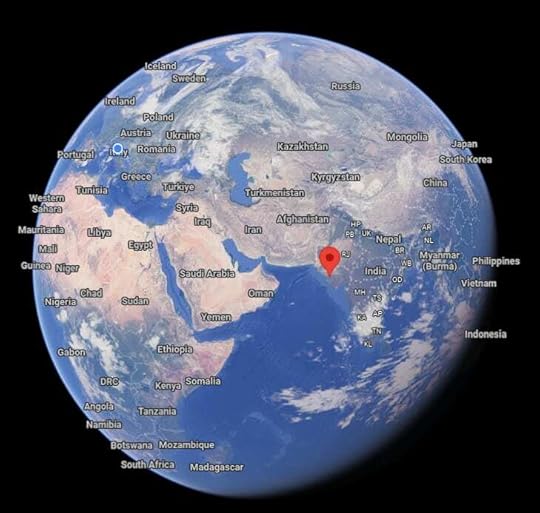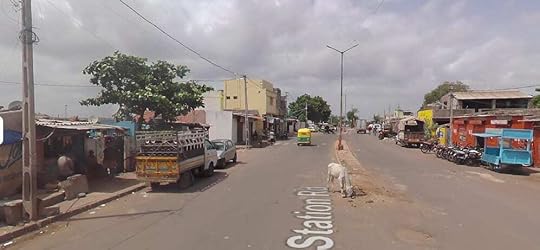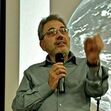Is it Over? Really?

The Statue of the Grand-Duke of Tuscany, Cosimo 1st, carrying a Palestinian flag in “Piazza Signoria,” in Florence. Is the war really over? I don’t know, nobody knows, but we can hope it is. Two years of madness in Palestine, two years of death and destruction. And now we are left with rubble, a devastated land, destroyed buildings, ruined lives, wounded bodies, and wounded souls. And the big question, why?
With my book, “Exterminations” (2024), I examined several examples of exterminations, discussed causes, used statistical methods to examine past trends, and arrived at the conclusion that exterminations are not exceptional events. They are part of the way humans interact with each other, flaring at unpredictable intervals, but following a “power law.” You can’t exactly predict when a large-scale extermination or a genocide will start, but you know that, given some conditions, it will.
In the end, as for everything in the universe, exterminations occur because they have reasons to occur. They do because someone will gain something from exterminating people, money, prestige, or power. They tend to flare when the “three laws of exterminations” that I propose in my book are present: 1) there has to be a recognizable minority within a larger social structure, 2) this minority has to be wealthy enough to provide an economic return from their extermination, and 3) the minority must not be able to muster an effective military resistance against the exterminators.
These laws seem to have very general validity — they describe practically all the known cases in history, starting from ancient times in that great cauldron of madness which is the region we call the “Middle East,” where several religions, ethnic groups, languages, and cultures. Possibly, the earliest recorded case is that of the Amalekites, when God ordered King Saul of Israel to kill them all, including women, children, and even livestock. In 2023, Benjamin Netanyahu, the Israeli Prime Minister, cited Palestinians as modern-day Amalekites to justify Israel’s military operations in Gaza.
So, to keep citing the Bible, is there nothing new under the sun? Maybe not, but the massacre of the Palestinians in Gaza has a peculiar cruelty, ruthlessness, and acharnement. We need to think about the story, because it can tell us much about our future, which, honestly, doesn’t look too good. I’ll see to discuss this matter more in depth in a future post.
Thinking about Palestine, you may be interested in a recent post of mine on my “Chimeras” blog dedicated to how, in ancient times, Jerusalem was considered the true geographical center of the world. It was never true, but it is true that it played a central role for a long time as a crucible of ideas, religions, and wars. It has not stopped playing it.
______________________________________________________
Jerusalem: the Center of the World?Oct 12, 2025

The Bünting cloverleaf map, created in 1581 by the German Protestant pastor and theologian Heinrich Bünting. Drawing from Medieval traditions, it placed Jerusalem at the center of the world. But is it, really?
In Medieval Europe, Jerusalem was considered to be the center of the world. It was probably the result of a line by Ezekiel 5:5: “This is Jerusalem; I have set her in the center of the nations, with countries all around her.” And that was taken seriously. Not only Jerusalem was considered at the actual center of the world, but it stood just above Hell, while the Garden of Even was a real place, located just nearby, near the opening of the Gihon Spring. This spring, which is today a mere trickle compared to what it once was, originates just outside of what is now the Old City of Jerusalem.
You can see below a map of the world that’s much older than Bünting’s cloverleaf. It is more difficult to read, but you can note Jerusalem exactly at the center. It is the “Psalter World Map” found in a Psalter. It was created during the 13th century.

But where is the true center of the world? And how should we define it? In physics, you have the concept of “center of mass,” the average position of the mass distribution in an object or system. You can also use the term “centroid” for the average position of all the points of a system. For a physical object, it is the balance point if the shape were made of a thin, uniform sheet of material, where it would balance perfectly on a pin.
You can easily define the centroid for the land mass of Earth. For instance, the centroid of the Afro-Eurasiatic block is located somewhere in Iran. If you want to know precisely, it is at 34.4° N, 58.6° E. Here it is, shown in Google Maps, not terribly far from Jerusalem, but not close, either.

The closest city to the centroid is Gonabad, a place that you probably never heard about, but, curiously, it turned out to be a place I knew something about. It is there that the last king of the Sasanian empire, Yazdegerd III, took refuge before being killed, it is said, by a miller. His death signaled the collapse of the Sasanian Empire. If you are interested in Iranian history, you can see an eerie and fascinating movie on Yazdegerd III at this link.
If we consider all the continents, including Antarctica, the point moves to somewhere in Sudan, but let’s focus on the biggest planetary landmass: The Afro-Eurasiatic bloc. And we may consider that a purely geographic average doesn’t tell us what the real “center of the world” is. It should be, rather, based on the distribution of people over the continents.
If we look for the “people’s centroid” of the Afro-Eurasian bloc, the result is different. I asked Grok-4 to do the calculation, and here are the results.

Now, the distribution is dominated by the huge population of India and East/South East Asia. The result is that the centroid moves to the Western coast of India. Here are the coordinates: 23°15’36.0”N 69°40’48.0”E. I didn’t check Grok’s calculation, but it seems to be a reasonable result.
The population centroid is in the Indian state of Gujarat, of which I must confess, I only vaguely knew the existence. The closest city is Bhuij. According to Wikipedia:
Kutch (Kachchh) was ruled by the Nāga chieftains in the past. Sagai, a queen of Sheshapattana, who was married to King Bheria Kumar, rose up against Bhujanga, the last chieftain of Naga. After the battle, Bheria was defeated and Queen Sagai committed sati. The hill where they lived later came to be known as Bhujia Hill and the town at the foothill as Bhuj. Bhujang was later worshiped by the people as snake god, Bhujanga, and a temple was constructed to revere him.
Which, I’d say, sounds like a fitting legend for a place that turns out to be the center of the Afro-Eurasian bloc.
What kind of place is that? Well, the Google mobile didn’t exactly reach the population centroid, although it could get within just a few tens of meters from it, as you see here.

That’s what you can see from the closest place where the Googlemobile arrived, about 30 m away.

Honestly, the area doesn’t look very impressive in architectural terms, but I suppose the people who live there see it as their sweet home.

I’ve never been to Gujarat, but from what I could see from Google Maps, Bhuj looks not unlike other places I saw in India. Dogs, cows, small shops, and the ubiquitous tuc-tucs moving around.

I wonder what it would be to enter one of those small shops, buy a Coke or something like that, and ask, “Do you people know you are at the population centroid of the Afro-Eurasian bloc?” Who knows? They could answer, “Yes, we know. We read it in the blog of a weird Italian guy.”



